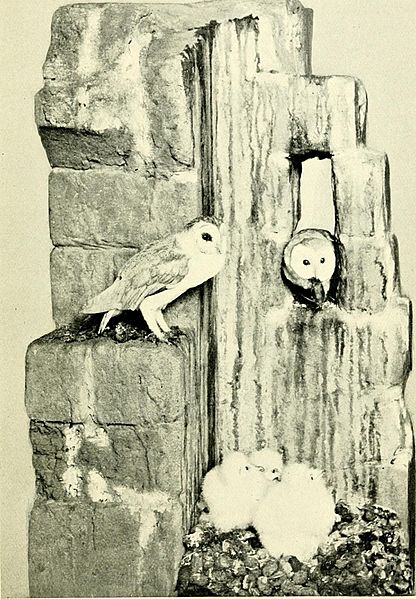Image: Handbook and guide to the British birds on exhibition in the Lord Derby Natural History Museum, Liverpool (1914) (14564156969)

Description: Identifier: handbookguidetob00live (find matches) Title: Handbook and guide to the British birds on exhibition in the Lord Derby Natural History Museum, Liverpool Year: 1914 (1910s) Authors: Liverpool Museum (Liverpool, England) Subjects: Liverpool Museum (Liverpool, England) Birds Publisher: Liverpool, C. Tinling Contributing Library: Smithsonian Libraries Digitizing Sponsor: Smithsonian Libraries View Book Page: Book Viewer About This Book: Catalog Entry View All Images: All Images From Book Click here to view book online to see this illustration in context in a browseable online version of this book. Text Appearing Before Image: f which the ground colour is greenish or tawny white, blotched withreddish-brown and lilac (see British Bird Egg Cabinet, draw^er 1).Two broods are often reared in a season. Case 179. SONG-THRUSH (Turdus musicus). The Throstle or Mavis is a common resident throughoutthe British Islands. The food consists of fruit, snails, worms andinsects. The familiar nest, lined with mud, is generally placed in athick bush, and the first clutch of eggs, from four to six in number,is laid early in March. They are greenish-blue, usually blotched withblack or purplish-brown, but are sometimes unspotted (see BritishBird Egg Cabinet, drawer 1). Two or three broods are reared in aseason. Case 180. BARN OWL (Strix flammea).Local names : Howlet, White Owl. Probably the best known of all the British Owls, and residentthroughout the year. It inhabits churches, barns, deserted ruinsand hollow trees, and the same haunts are frequented by the samepair or their offspring for many years in succession. They feed on Text Appearing After Image: The Barn Owl GroupCase 180. 27 rats, mice, shrews and small birds, and less commonly on insects,parts of all of which have been recognised at different times on examina-tion of the pellets rejected through the mouth, which are generallyto be found in abundance near any place of their resort. The BarnOwls undoubtedly render good service to the agriculturist by thedestruction of vermin. Two to six eggs are commonly laid, of a dullwhite in colouring (see British Bird Egg Cabinet, draw^er 7). Case 181. TAWNY OWL (Syrnium aluco).Local name : Wood-owl. This species, also known as the Brown Owl, is fairly commonthroughout Great Britain, wherever woods and crags suitable to itshabits are found. It does not appear to occur in Ireland. It is morenocturnal than any other British Owl, and feeds chiefly on rats, mice,moles, and sometimes on small birds, insects, or surface-swimmingfishes. The nesting sites vary much, the most usual being a hollowin the trunk of a tree, but old nests of Rooks, Crow Note About Images Please note that these images are extracted from scanned page images that may have been digitally enhanced for readability - coloration and appearance of these illustrations may not perfectly resemble the original work.
Title: Handbook and guide to the British birds on exhibition in the Lord Derby Natural History Museum, Liverpool (1914) (14564156969)
Credit: https://www.flickr.com/photos/internetarchivebookimages/14564156969/ Source book page: https://archive.org/stream/handbookguidetob00live/handbookguidetob00live#page/n59/mode/1up
Author: Internet Archive Book Images
Permission: At the time of upload, the image license was automatically confirmed using the Flickr API. For more information see Flickr API detail.
Usage Terms: No known copyright restrictions
License: No restrictions
License Link: https://www.flickr.com/commons/usage/
Attribution Required?: No
Image usage
The following page links to this image:

